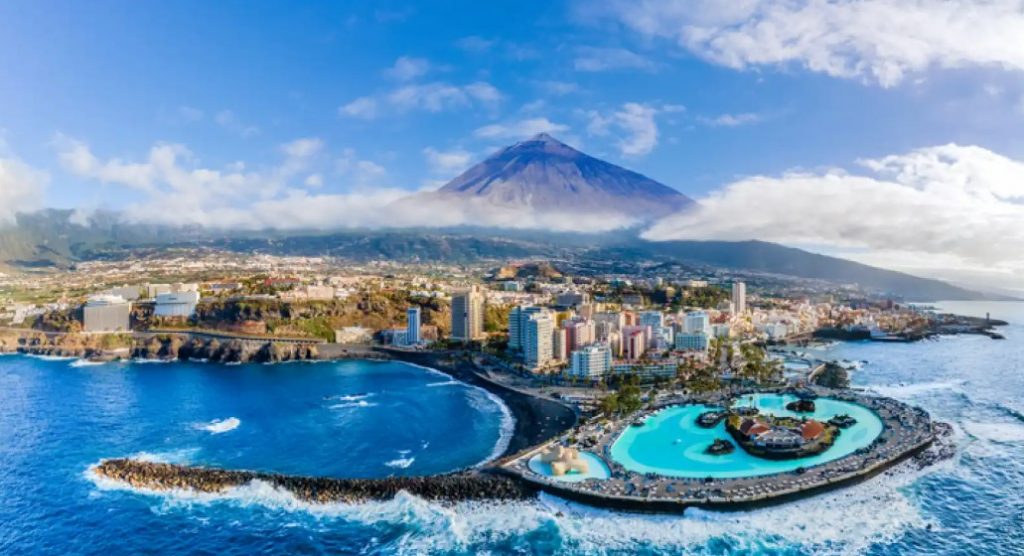
Nestled in the azure waters of the Atlantic Ocean, the Canary Islands form an enchanting archipelago known for their volcanic landscapes, diverse ecosystems, and year-round mild climate. Comprising 7 main islands, Tenerife, Gran Canaria, Lanzarote, Fuerteventura, La Palma, La Gomera, El Hierro, this Spanish autonomous community has a collective population of over 2 million residents. Renowned for their natural beauty, the Canary Islands boast unique attractions such as Mount Teide, Spain’s highest peak, and the otherworldly landscapes of Timanfaya National Park. The economy of the Canary Islands is driven by tourism, with visitors drawn to the pristine beaches, vibrant marine life, and a myriad of outdoor activities. The archipelago’s cultural richness is reflected in its traditional festivals, lively music, and unique cuisine influenced by Spanish, African, and Latin American flavors.
Some things to know about the Canary Islands:
-The archipelago is celebrated for its diverse landscapes, ranging from the volcanic terrain of Lanzarote’s Timanfaya National Park to the lush forests of La Palma and the golden sand dunes of Fuerteventura and Gran Canaria.
-The volcanic landscape around Mount Teide, including the Teide National Park, is a UNESCO World Heritage site.
-La Palma is renowned for its clear skies and minimal light pollution, making it an ideal location for stargazing. The Roque de los Muchachos Observatory is one of the world’s premier astronomical observatories.
-La Gomera is known for its traditional whistling language, “Silbo Gomero,” which has been used by locals for communication across the island’s steep valleys.
-Lanzarote, has a distinctive wine culture shaped by its volcanic terrain and unique agricultural practices. The island’s vineyards are often referred to as “geria” or “zocos,” and they are characterized by small, crater-like depressions surrounded by protective stone walls.
